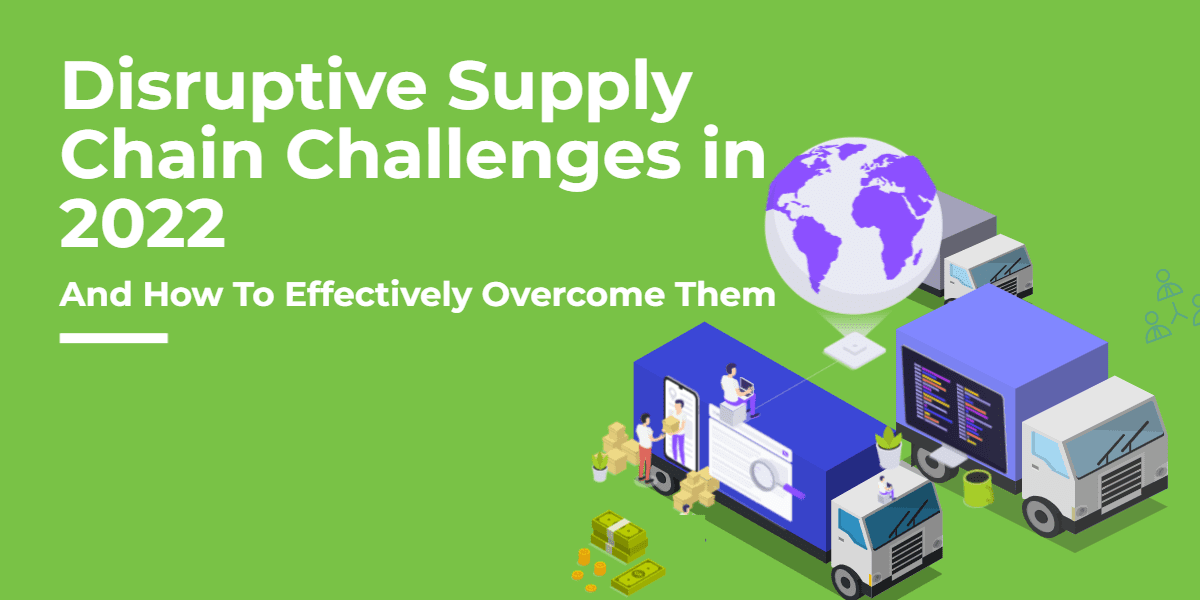It’s no secret that supply chains are becoming more complex every day. With new technologies and changing customer demands, supply chains are constantly evolving. This can make it difficult for businesses to keep up.
In order to stay ahead of the curve, supply chains will need to address a number of key challenges in 2022.
Luckily, shippers and carriers have partnered up to offer their insights on the biggest hurdles that businesses will face in the coming year. Here are the top supply chain challenges in 2022, according to both of these groups:
- Managing increasing complexity
- Addressing capacity constraints
- Dealing with disruptions caused by weather or other factors
- Meeting consumer demand for faster deliveries
- Implementing new technologies and automation solutions
Managing Increasing Complexity
As companies face increasing complexity in their supply chains, they need to find ways to manage that complexity and ensure the flow of goods and materials is as efficient as possible. Here are a few tips designed to help alleviate even the toughest supply chain challenges.
- Use technology to help you track inventory and shipments. It will help you stay on top of things and identify potential issues before they become more serious.
- Make sure your suppliers are reliable and can meet your demands. Waiting too long for supplies can disrupt the entire production process.
- Plan ahead as much as possible and be prepared for disruptions. Unexpected events can always happen, but if you have a plan B ready to go, it will minimize the impact.
Addressing Capacity Constraints
As supply chains become increasingly complex, it becomes more difficult for shippers and carriers to manage the flow of goods. This complexity can be caused by a variety of factors, including global sourcing, just-in-time delivery, and the growth of ecommerce.
To address this challenge, shippers and carriers need to work together to develop a comprehensive plan that will allow them to efficiently manage the supply chain. This plan should include strategies for dealing with disruptions, as well as mechanisms for tracking and monitoring inventory levels.
In addition, shippers and carriers should use technology to help them optimize their supply chain operations. Technology can automate tasks such as order processing and freight booking, which can help reduce the amount of time needed to complete these tasks.
By working together and using technology, shippers and carriers can manage the increasing complexity in supply chains. This will help them to improve efficiency and reduce costs.
Dealing with Disruptions
Disruptions in supply chains can happen for a variety of reasons, such as natural disasters, labor strikes, or system failures. When these disruptions occur, it can be difficult for shippers and carriers to get back on track. Here are some tips for dealing with disruptions in supply chains:
- Communicate with your suppliers and customers regularly. This way, you can keep them updated on the situation and minimize the disruption.
- Maintain an up-to-date contact list. It will make it easier to reach out to all of your suppliers and customers in case of an emergency.
- Plan ahead. If you know that a disruption is likely to happen, try to put a backup plan in place. It will minimize the potential impact of the disruption.
- Stay calm and organized. When things get chaotic, it can be difficult to make good decisions. Try to stay calm and focused so that you can handle the situation effectively.
Meeting Consumer Demand
Consumers are increasingly demanding faster deliveries from retailers. This places a lot of pressure on supply chains, which need to find ways to speed up the delivery process without compromising quality or safety.
Many companies are turning to third-party logistics providers (TPLs) to help manage the influx of orders. TPLs have the experience and resources necessary to handle large volumes of shipments, ensuring that products reach their destination on time.
In addition to offering fast delivery times, shippers must also be mindful of the cost of shipping. Carriers are increasingly charging by weight rather than by shipment size, so companies need to select the right carrier for each order.
Implementing New Technologies
As supply chains become more complex and technology-driven, shippers and carriers are looking for ways to implement new technologies within their operations. This can be a challenge, as supply chains are often reliant on legacy systems that have been in place for many years.
However, there are many benefits to implementing new technologies, including increased efficiency and visibility into the supply chain.
Shippers are increasingly turning to cloud-based solutions to manage their supply chains. Cloud-based software allows users to access information from any device with an internet connection, making it easy to track shipments no matter where they are in the world.
Additionally, cloud-based solutions typically offer real-time updates on shipment statuses, which helps reduce the chances of errors.
Carriers are also taking advantage of new technologies, such as GPS tracking and automated notification systems. These technologies allow carriers to track shipments in real-time, which helps them make better decisions about where to route their trucks.
Additionally, automated notification systems can notify shippers and receivers when a shipment is expected to arrive, helping reduce the need for manual contact.
While implementing new technologies can be difficult, the benefits often outweigh the costs. By working with supply chain partners to identify which technologies would be most beneficial, companies can improve their efficiency and visibility while still staying within budget.
Complex Doesn’t Mean Impossible
Looking ahead to the rest of 2022, these are some of the key challenges that supply chains will face. By preparing for these challenges now, businesses can ensure that they are ready for whatever comes their way.
Looking for the right software development partner? RTS Labs has helped hundreds of businesses of all sizes successfully develop the right outsourced custom software for many business needs. Get in touch with us today to learn more about how we can help.






